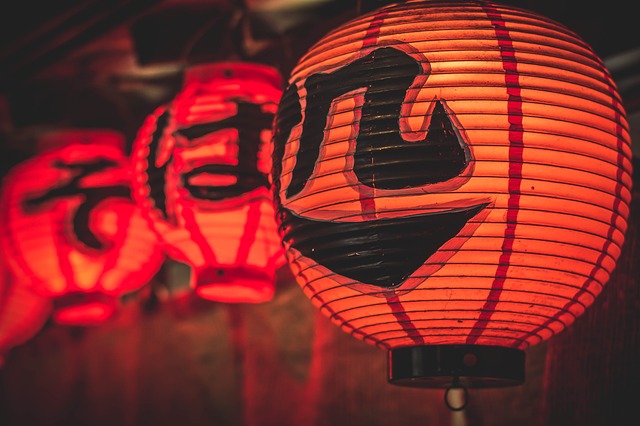
Pre-reading questions:
I will read each question. Then, please answer them.
講師がそれぞれの質問を読むので答えましょう。
- Have you bought any handmade products?
- What handmade product is your favorite?
Vocabulary:
I will read the words, meanings, and sample sentences. Then, repeat after me.
単語、意味、例文を読みます。講師に続いて音読しましょう。
- region /REE-juhn/
- bamboo /bam-BOO/
- lantern /LAN-tern/
- designate /DEZ-ig-neyt/
- natural /NACH-er-uhl/
[noun] – an area of a country, especially one that has a particular characteristic or is known for something
Shikoku is Japan’s smallest region and island.
[noun] – a tall grass that grows in hotter regions and that has hard, hollow stems, or the stems of this plant
That table is made of bamboo.
[noun] – a light inside a container that has a handle for holding it or hanging it up, or the container itself
They kept the lantern burning through the night.
[verb] – to choose someone or something for a special job or purpose
Please designate someone as the spokesperson.
[adjective] – as found in nature and not involving anything made or done by people
This product is made from natural substances.
Article reading:
Please read the whole article. Then, I will check your pronunciation and intonation.
記事を音読しましょう。講師はあなたの発音とイントネーションを確認します。
Japan has eight regions, each with its own craft traditions that have developed throughout the country’s long history. The unique handiworks, which vary from pottery to simple household items, represent both past and a bright future.
Wood, bamboo, and metal handicrafts from Japan are well-known for their high quality. People admire Japanese blades because of their poetic steel and cast-iron vessels. Ceramics from the country are recognized for their simplicity on the one hand and their complexity on the other. Japan’s stunning papercrafts like the washi paper lanterns, origami (paper folding), kirigami (paper cutting), and wagasa (oil-paper umbrellas) are also loved by many. Japanese crafts continue to develop despite their long history. To encourage appreciation of—and continuing work in—such fields, the country has created a system of official master artisans and designated some of the top people working in each sector as “living national treasures”.
The natural gentleness of Japanese crafts is the source of their power, architect Kengo Kuma says. For him, Japanese handicrafts are a philosophical gift to humanity.
Wood, bamboo, and metal handicrafts from Japan are well-known for their high quality. People admire Japanese blades because of their poetic steel and cast-iron vessels. Ceramics from the country are recognized for their simplicity on the one hand and their complexity on the other. Japan’s stunning papercrafts like the washi paper lanterns, origami (paper folding), kirigami (paper cutting), and wagasa (oil-paper umbrellas) are also loved by many. Japanese crafts continue to develop despite their long history. To encourage appreciation of—and continuing work in—such fields, the country has created a system of official master artisans and designated some of the top people working in each sector as “living national treasures”.
The natural gentleness of Japanese crafts is the source of their power, architect Kengo Kuma says. For him, Japanese handicrafts are a philosophical gift to humanity.
True or False:
Read the sentences and identify if they are true or false based on the article.
文章を読んで、記事に基づいて正誤を答えましょう。
- Each region in Japan has its own craft tradition.
- Only wood and metal handicrafts from Japan are well-known.
- Wagasa is made from bamboo.
- Japan has created a system of “living national treasures” to encourage appreciation of the country’s handicrafts.
- According to Kengo Kuma, the natural gentleness of Japanese crafts is the source of their power.
Fill in the blanks:
Choose the correct word from the table then fill in the blanks.
適切な言葉を選んで空欄を埋めましょう。
| region | bamboo | lantern | designate | natural |
- They sell handmade furniture, including wood and _______ shelves.
- Who will you _______ as the project manager?
- Floods and earthquakes are _______ disasters.
- Hokkaido is one of the top tourist destinations in Japan. It is a _______ known for its onsen.
- Japan has several _______ festivals, such as Tanabata Chochin and Toro Nagashi.